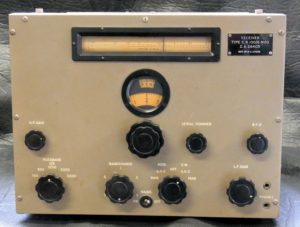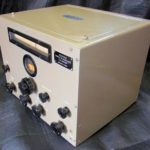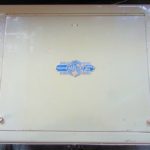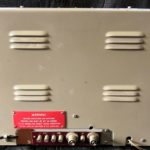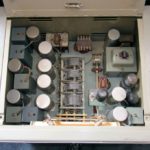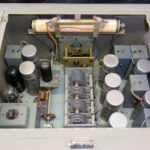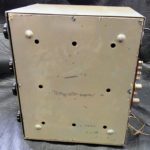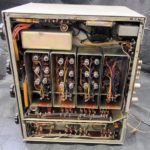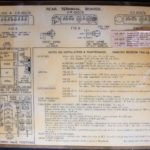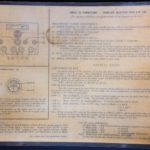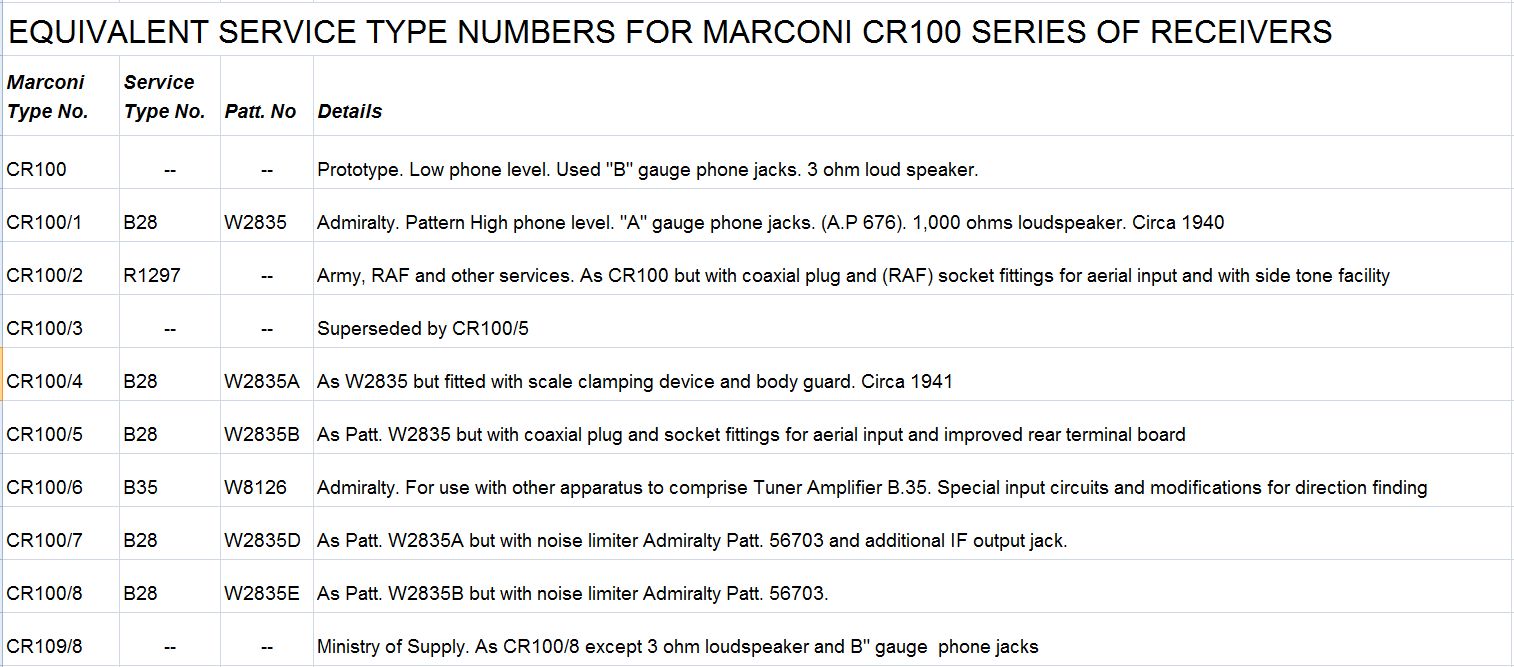This is a superheterodyne receiver with low frequency coverage from 60 to 420 kHz and medium/high frequency coverage of 500 kHz to 30 MHz across 6 switched bands: 60 – 160 kHz, 160 – 420 kHz,
0.5 – 1.4 MHz, 1.4 – 4.0 MHz, 4.0 – 11.0 MHz, 11.0 – 30 MHz. The IF passband can be switched to the following filters 100 Hz, 300 Hz, 1200 Hz, 3000 Hz or 6000 Hz.
Valve lineup, 11 total, single conversion superhet circuit with 2 RF and 3 IF stages. KTW62 (x7 RF/IF amps), X66 (Mixer), DH63 (AVC diode/LF amp.), KT63 (Output tetrode), U50 (Full wave rectifier). Sensitivity: 1.5uV @20dB S/N on CW up to 18 MHz and typically 3uV above 18 MHz. The Intermediate Frequency is 465 kHz. Power input – 200/250 VAC, 50 Hz @ 85 watts or 6 volt and 160VDC.
Physical dimensions: W*H*D 407*305*343 mm (16*12.5*16.5 inches), 37 kg (82 lbs)
The design on this receiver started in July 1939 in order to provide the Royal Navy with a superior receiver. The experimental model was taken to Portsmouth for assessment in the spring of 1940. Full-scale production started in 1941 and nearly 20,000 were manufactured up to 1946. There are a number of variants of this old set, the initial prototype was designated CR100. It was followed by variants designated CR100/1 through CR100/8. None of the CR100’s were ever fitted with S-meters as standard. The small metal panel, with a VR54 = CV1054 = EB34 double diode valve and toggle switch next to it, with the panel marked AP56703 (AP= Admiralty Pattern) is a noise limiter circuit and it is a definite identifier that it is a CR100/8.
The CR100/1, /4, /5, /6, /7 and /8 were also called the Admiralty Model B28 receivers. ‘Admiralty Pattern B28’ was the standard MF/HF receiver on the Royal Navy and Royal Canadian Navy ships in WWII.
Used mostly in “Y-stations” for intercept of enemy communication.
A truly classic, vintage military and highly collectable valve radio receiver. But from all accounts, this is not a highly regarded receiver. It was notoriously unstable, and tuning varied from one set to another. When people found stations, they usually wrote down the dial positions for that particular radio. Sometime You can see that the tunings for several short wave broadcasting stations have been written right on the panel.
References:
http://www.iwm.org.uk/collections/item/object/30005164
http://portabletubes.co.uk/boats/cr100.htm
http://bama.edebris.com/manuals/marconi/cr100/
https://www.flickr.com/photos/gamma-infinity/4620282787
Now this receiver has been sold (june 2017) to a radioamateur living in a small town 17 km east of Skövde in southern Sweden. He have a collection with a lot of vintage communication receivers. And he liked this receiver because it was nearly in “untouched” original shape.
